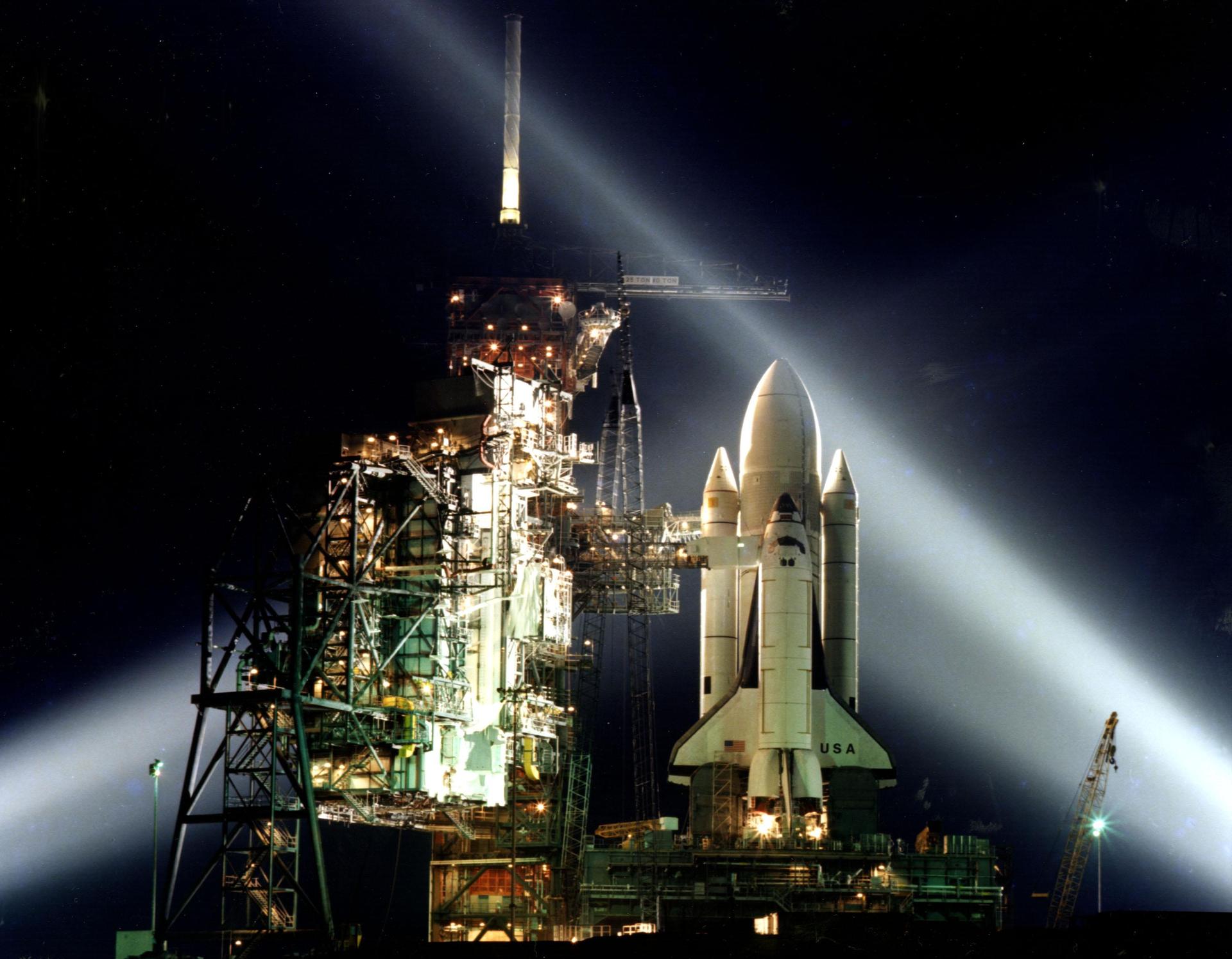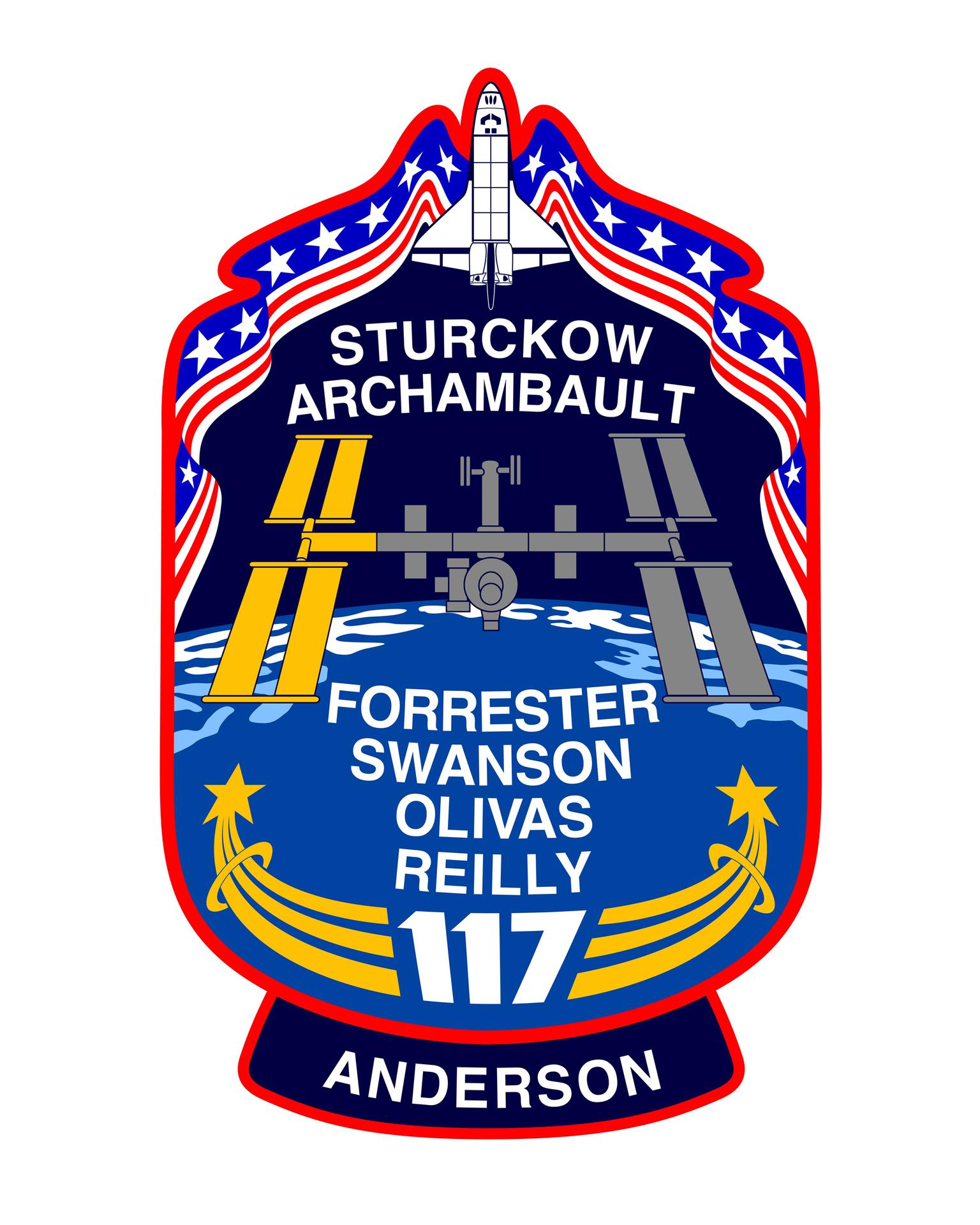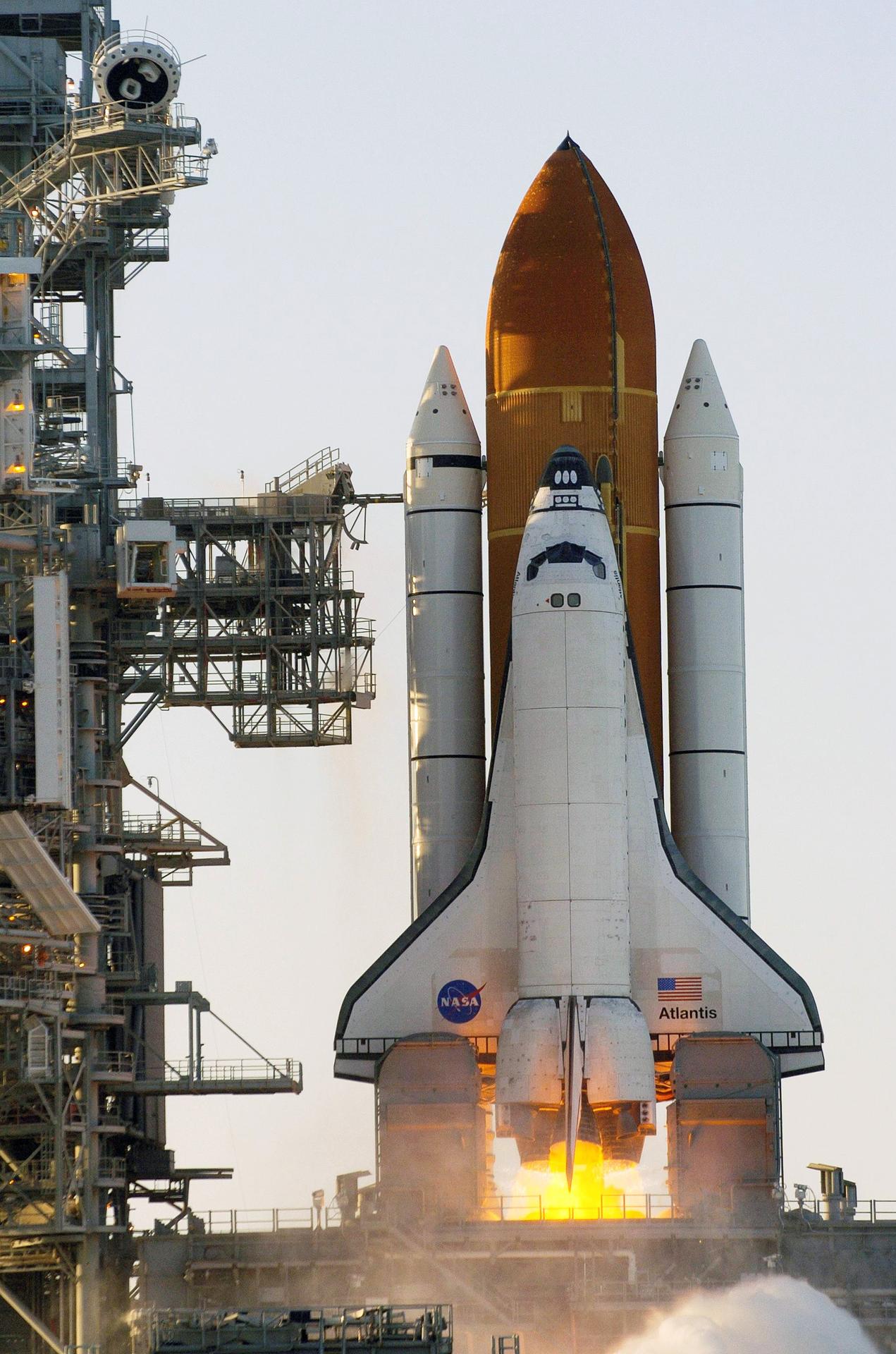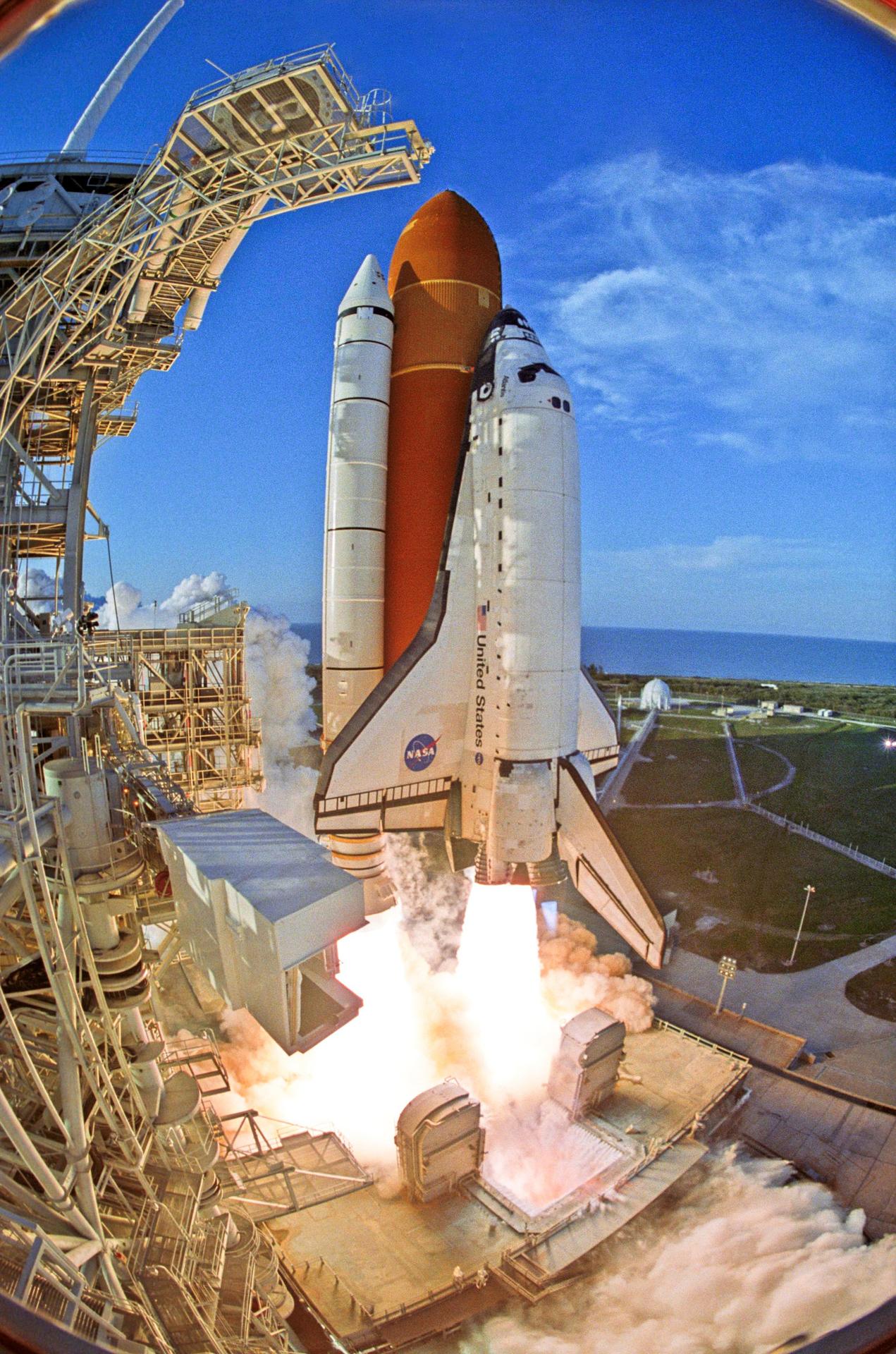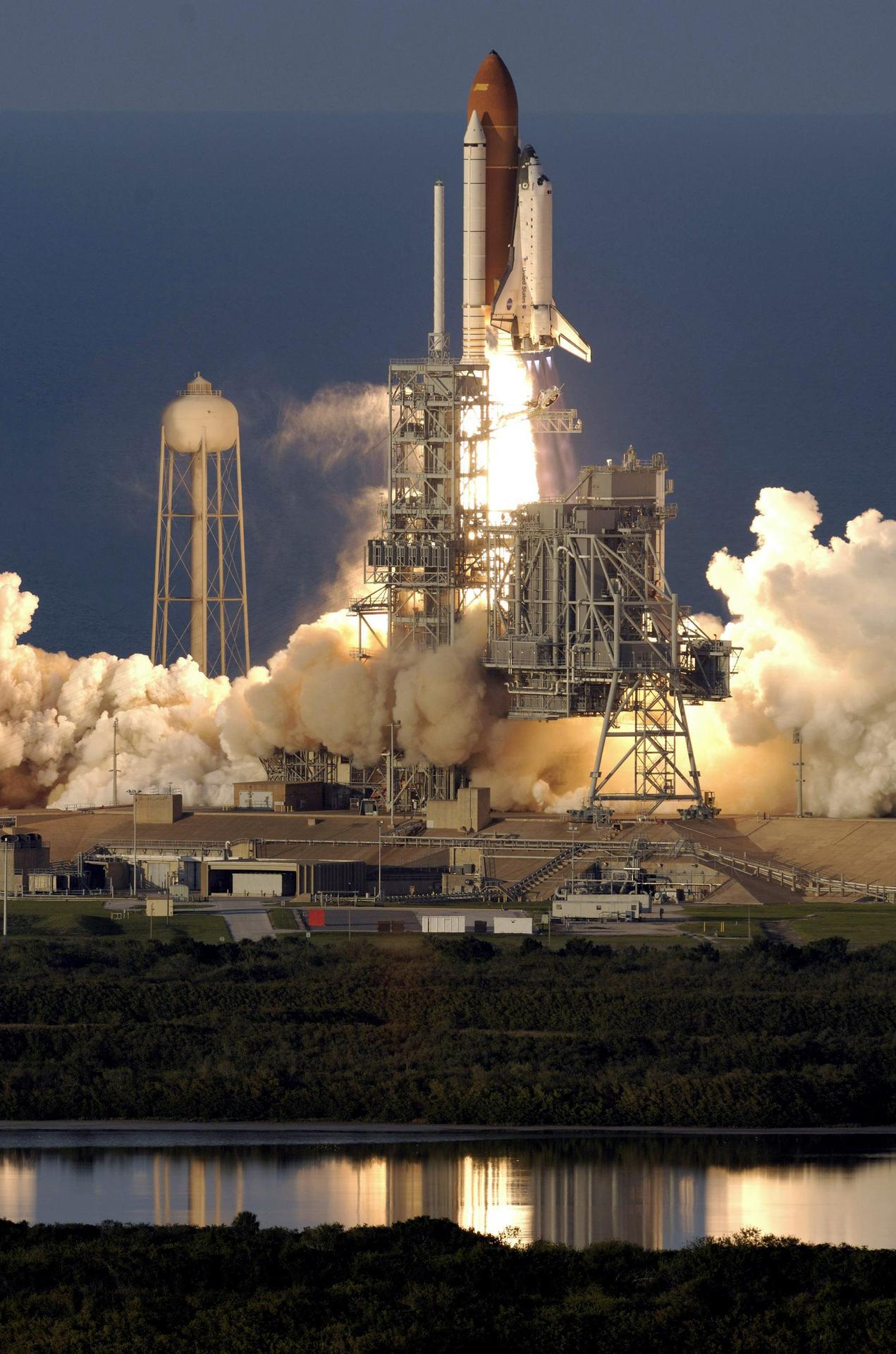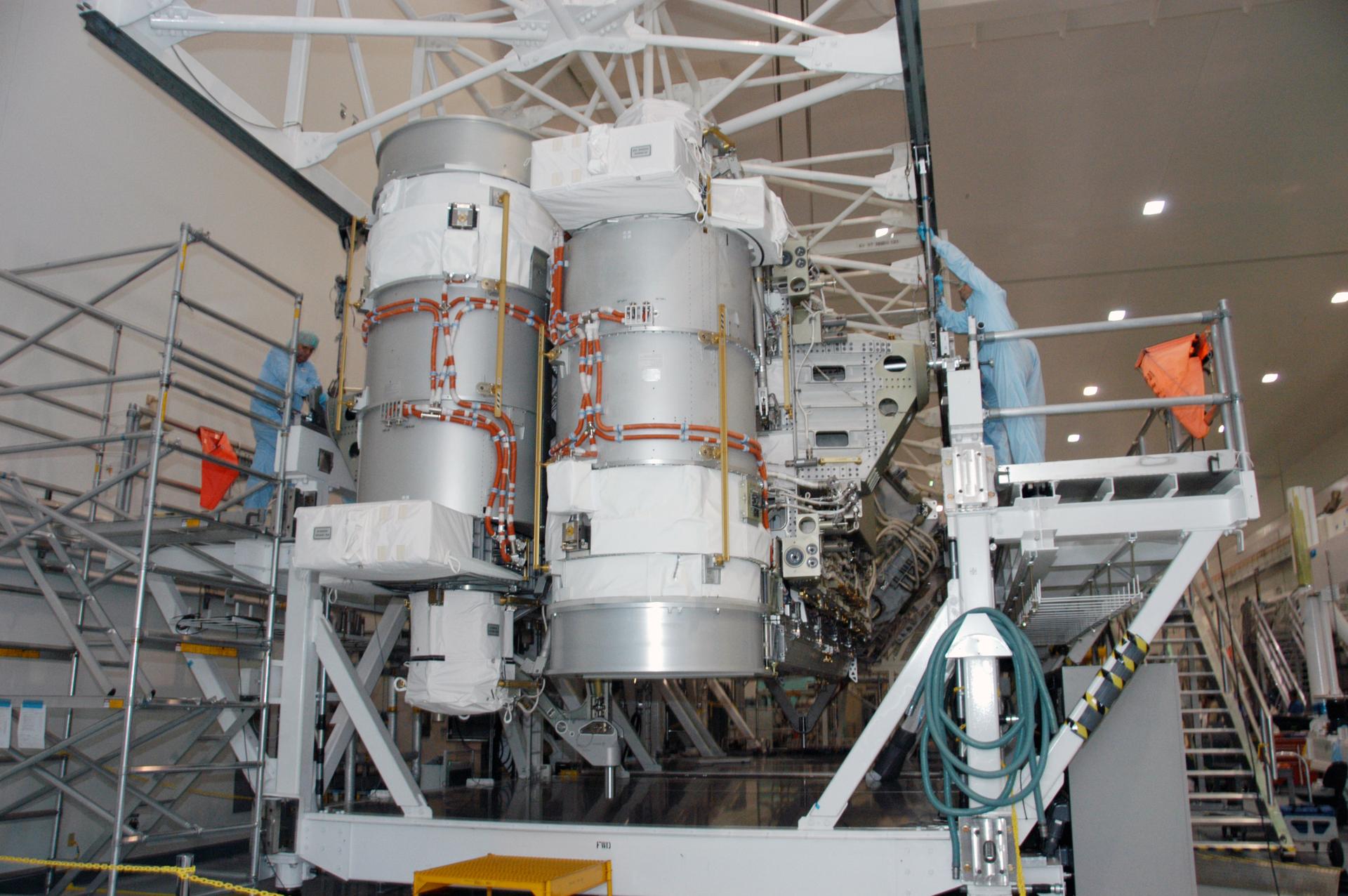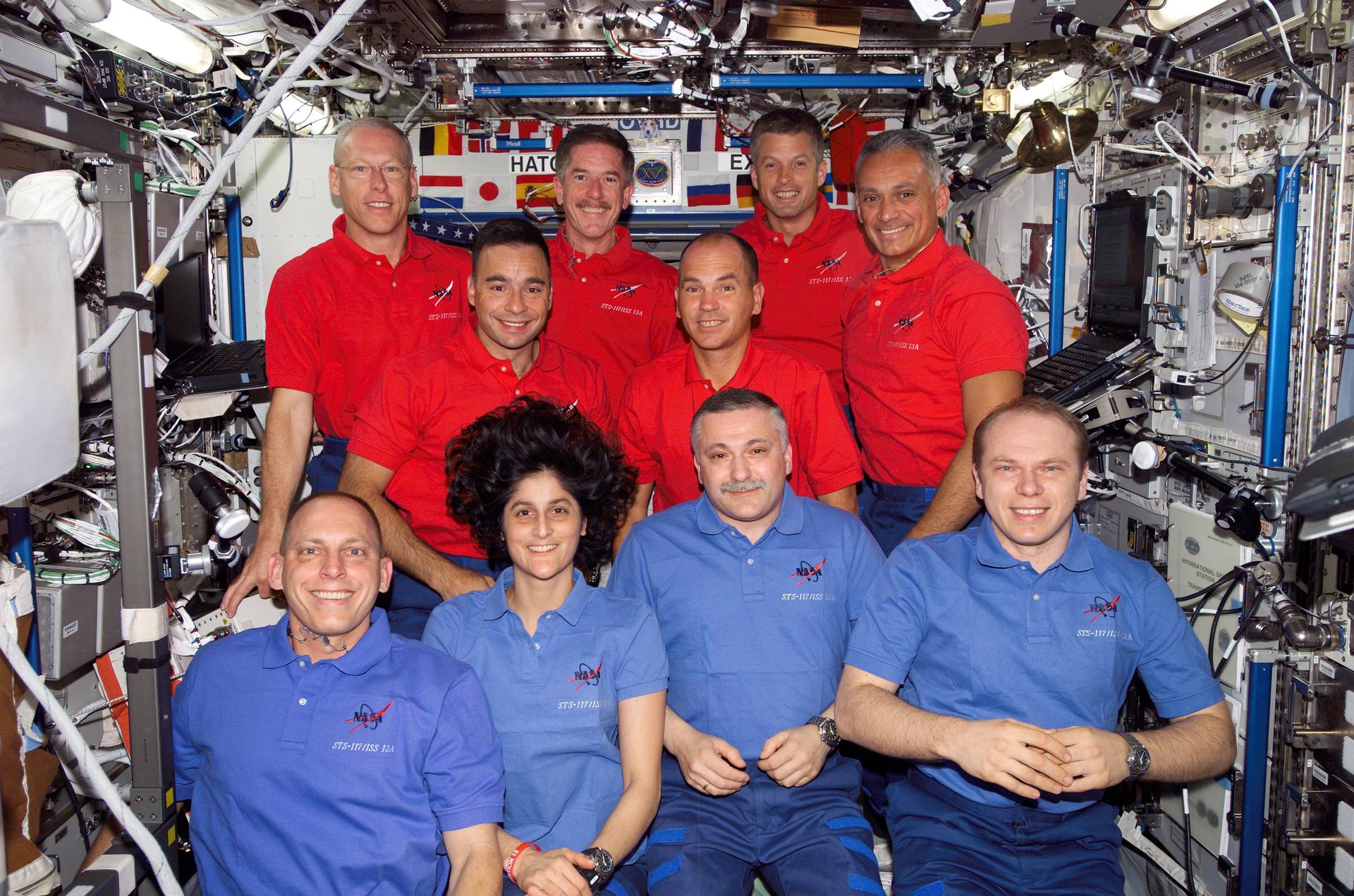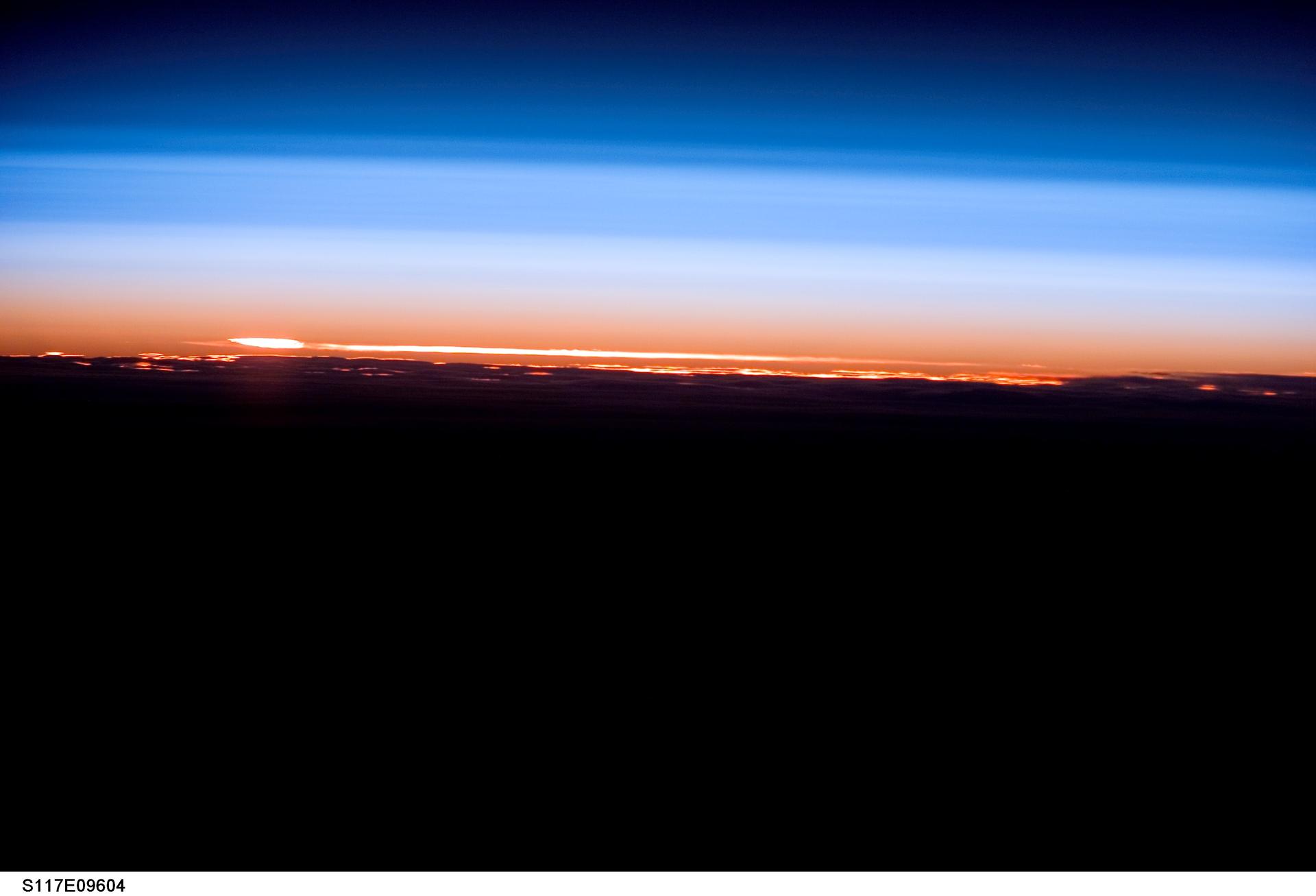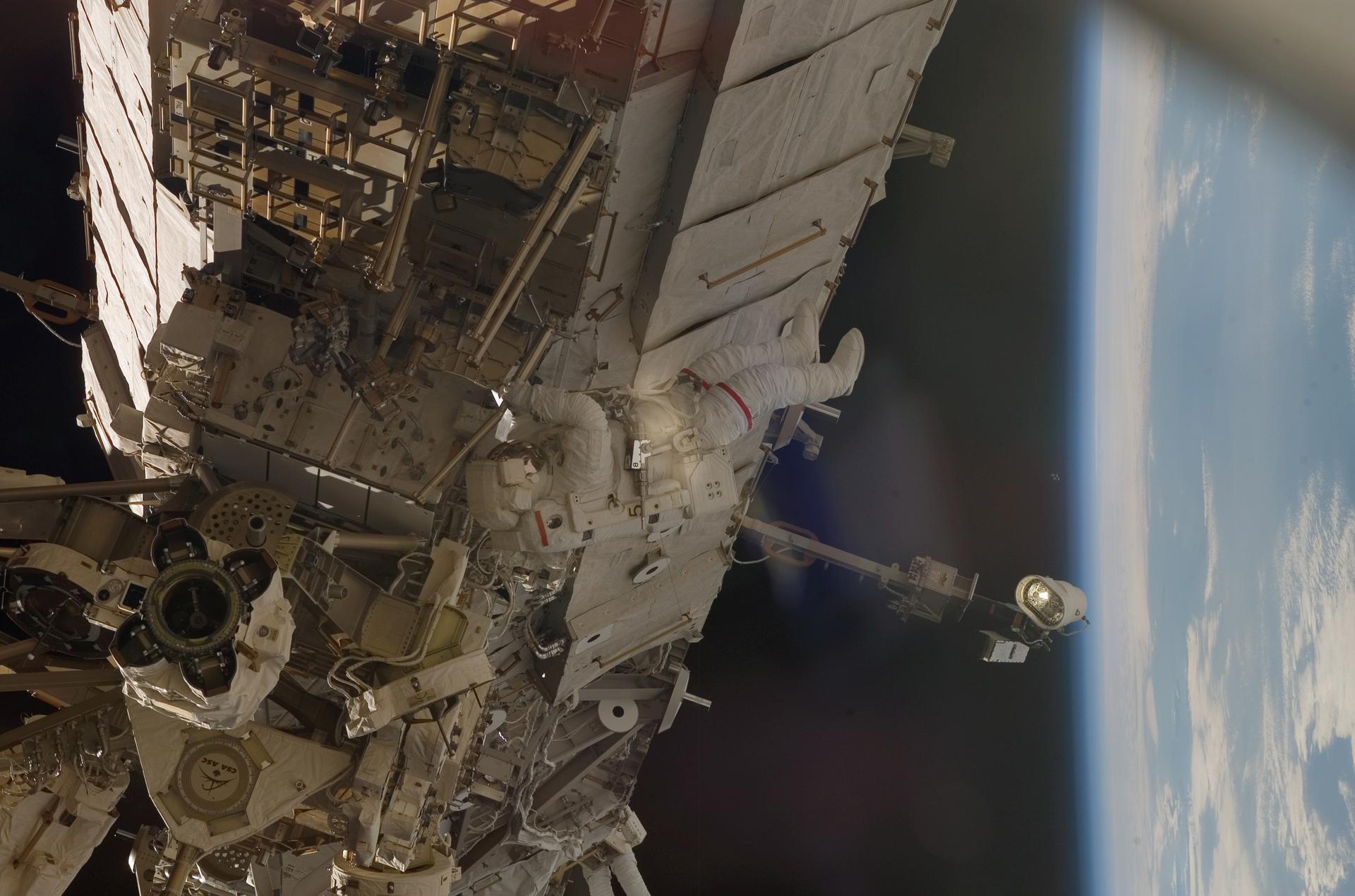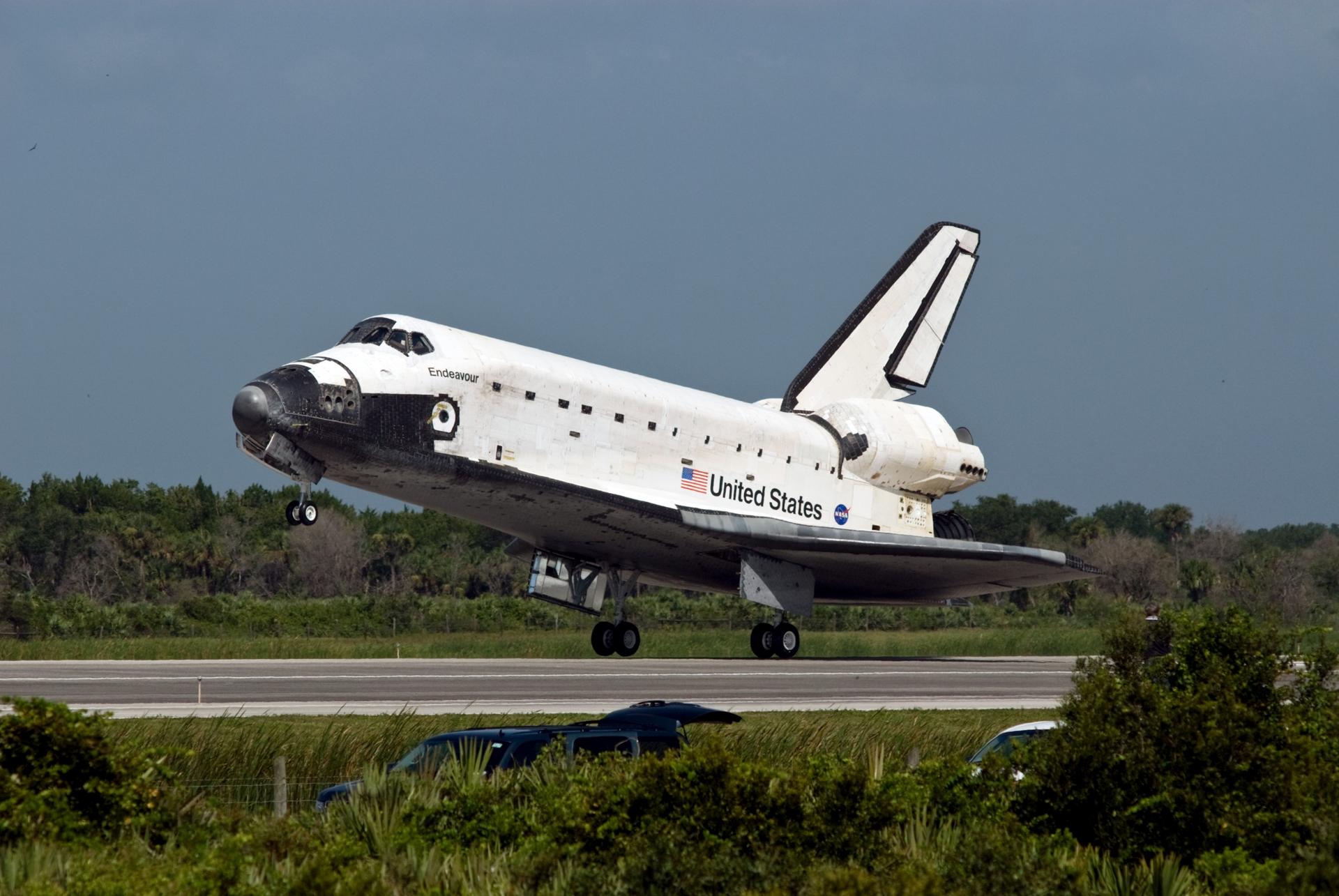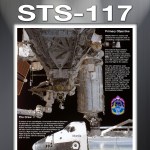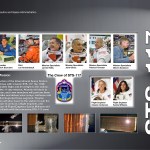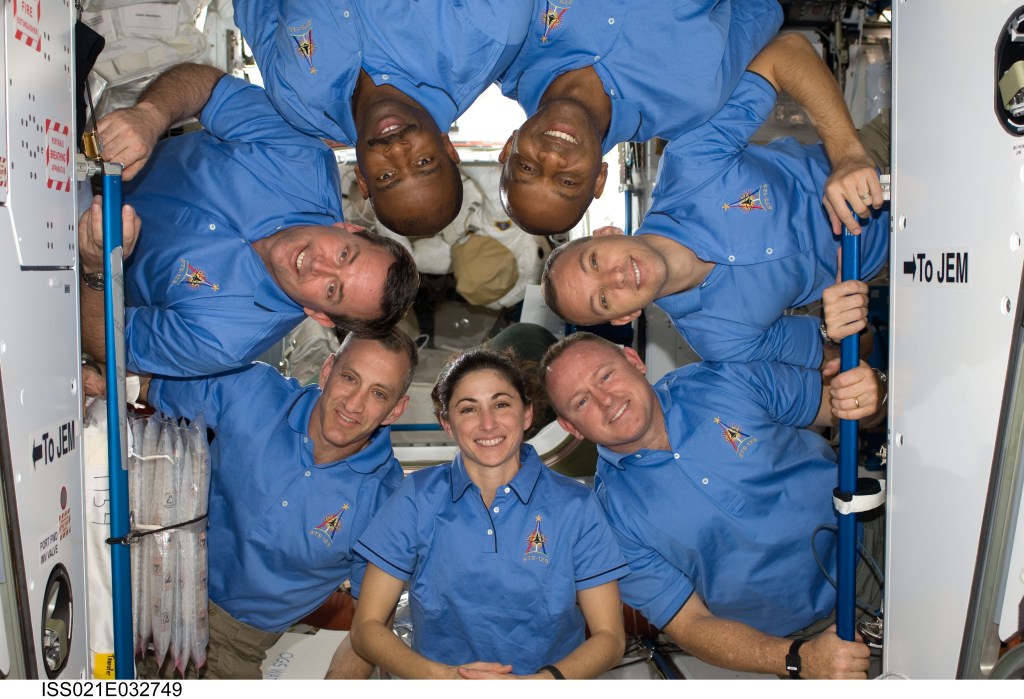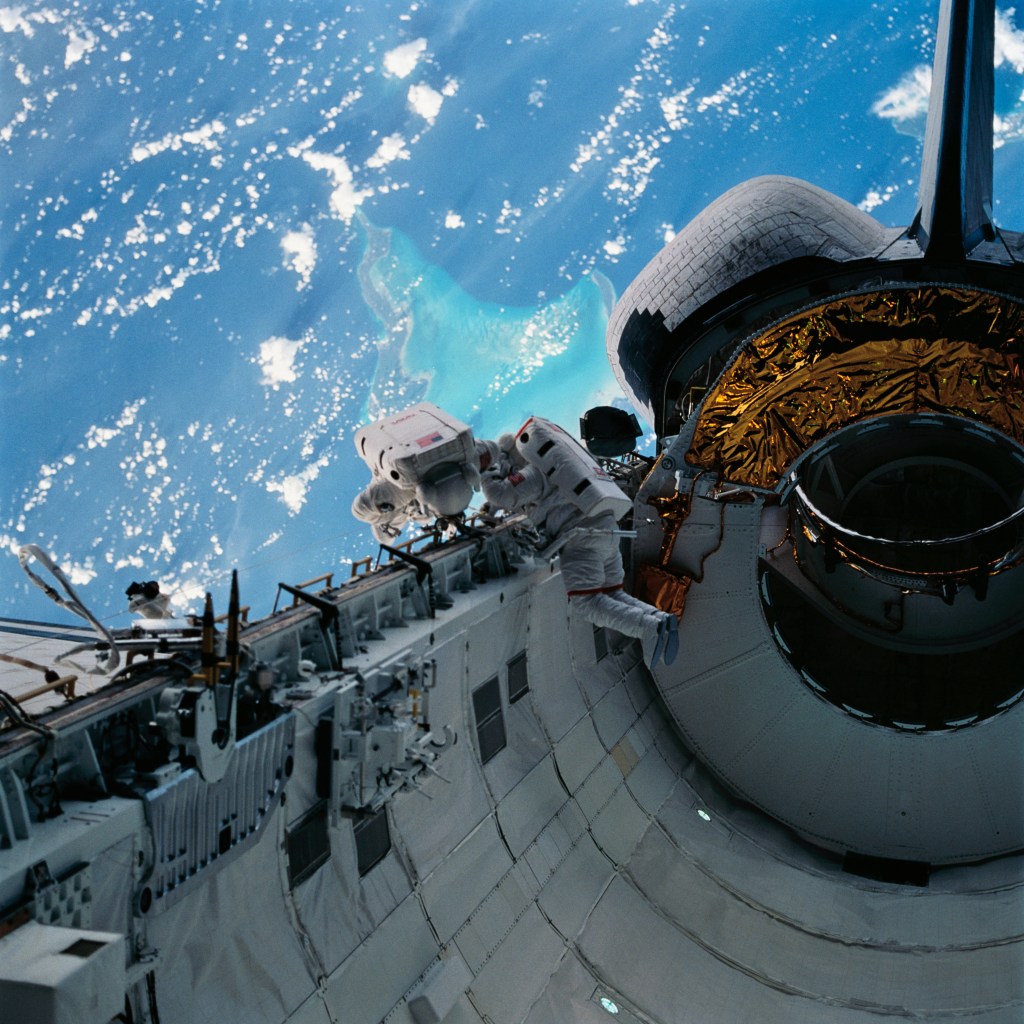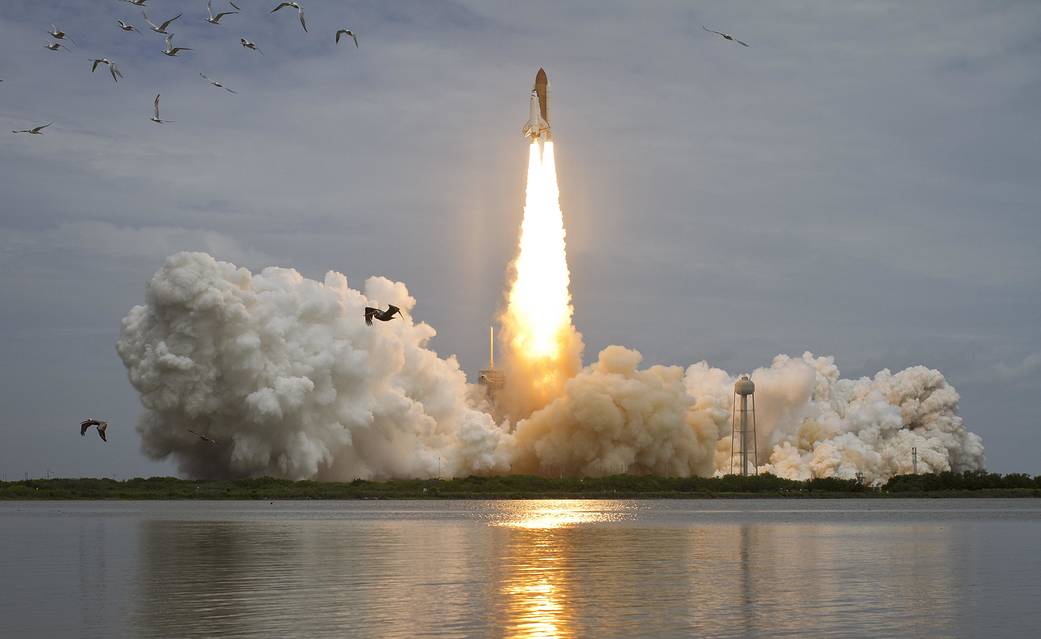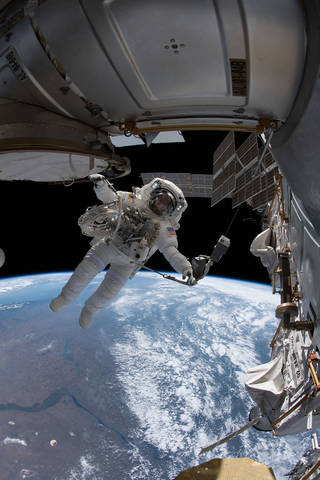
STS-117
The STS-117 mission objectives include the addition of the second and third starboard truss segments (S3/S4) with Photovoltaic Radiator (PVR), the deployed third set of solar arrays. The P6 starboard solar array wing and one radiator were retracted.
orbiter
mission duration
Launch
Landing

Mission Facts
Mission: International Space Station Assembly Flight 13A
Space Shuttle: Atlantis
Launch Pad: 39A
Launched: June 8, 2007, 7:38:04 p.m. EDT
Landing Site: Edwards Air Force Base, Calif.
Landing: June 22, 2007, 3:49:38 p.m. EDT
Runway: 22
Mission Duration: 13 days, 20 hours, 12 minutes and 44 seconds
Main Gear Touchdown: 3:49:38 p.m. EDT
Nose Gear Touchdown: 3:49:49 p.m. EDT
Wheel Stop: 3:50:48 p.m. EDT
Miles Traveled: 5.8 million
Crew
Frederick W. (Rick) Sturckow, Commander
Lee J. Archambault, Pilot
James F. Reilly II, Mission Specialist
Steven R. Swanson, Mission Specialist
Patrick G. Forrester, Mission Specialist
John D. (Danny) Olivas, Mission Specialist
Clay Anderson, Mission Specialist
Launch Highlights
The Space Shuttle Atlantis rocketed into a Florida twilight sky on time, kicking off the first of four shuttle missions scheduled for 2007. Atlantis’ climb to orbit was flawless, carrying a seven-member crew.
The mission was delayed in February after the shuttle suffered hail damage on the 26th to tiles and the external tank. The decision was made to roll back the shuttle and make repairs in the VAB.
Landing Highlights
Atlantis landed on Runway 22 at Edwards Air Force Base in California, concluding a 13-day, 20-hour, 12-minute flight covering 5.8 million miles. The landing was diverted to California due to marginal weather at Kennedy. Main gear touchdown was at 3:49:38 p.m. EDT. Nose gear touchdown was at 3:49:49 p.m. and wheel stop was at 3:50:48 p.m. This was the 51st landing for the Space Shuttle Program at Edwards Air Force Base.
After preparations for a cross-country, piggy-back flight on a shuttle carrier aircraft, Atlantis left EAFB on July 1. Several fuel stops and weather delays brought Atlantis to KSC on July 3, touching down at 8:27 a.m. EDT.
Mission Highlights
On June 8, the crew used the robotic arm to take a closer look at an area of an insulation blanket on the port orbital maneuvering system pod that was seen to be pulled away from adjacent thermal tiles. On June 9, Pilot Lee Archambault and Mission Specialists Patrick Forrester and Steve Swanson used the shuttle’s robotic arm and an extension boom-mounted sensor system to inspect the heat shield on Atlantis’ wing leading edges and nose cap.
Clay Anderson was transferred to the International Space Station as an official station crewmember of Expedition 15 and Flight Engineer Suni Williams swapped places to join the Atlantis crew.
An issue surfaced during the mission with the Russian segment computers that provide backup attitude control and orbital altitude adjustments. Russian specialists worked with U.S. teams, troubleshooting and restoring computer capabilities. The shuttle’s propulsion provided backup.
By June 15, Yurchikhin and Kotov got two of three lanes in both computers running after bypassing with external cabling what appeared to be a faulty power switch. They repeated the modification on the last two channels.
On June 18, the Russians were able to demonstrate the station’s ability to maintain attitude control, enabling the shuttle’s departure.
Activation of the rotary joint provided use of four U.S. solar array wings tracking the sun during orbit of the station. Atlantis undocked from the station June 19, leaving behind 19 tons of food, water and equipment. A flyaround provided a good look at the reconfigured spacecraft. At a distance of 46 miles from the station, the shuttle robot arm and orbiter boom sensor system were used to inspect the thermal protection system on both wings and the orbiter’s nose cap.
- EVA No. 1 — 6 hours, 15 minutes: June 11. Mission Specialists Jim Reilly and Danny Olivas focused on the final attachment of bolts, cables and connectors to begin the activation of the S3/S4 truss segment and ready it for deployment of its solar arrays.
The spacewalk was delayed for about an hour after the station temporarily lost attitude control when the station’s control moment gyroscopes went offline due to the mass of the new truss segment in the final stage of its attachment. The loss was not unexpected because of the station’s skewed asymmetry as the 17.8 ton, bus-sized S3/S4 truss was being moved toward the S1 truss. - EVA No. 2 — 7 hours, 16 minutes: June 13. After station controllers unfurled the solar array attached to the newly installed S3/S4 truss segment on June 12 to soak up some sun, Forrester and Swanson removed all of the launch locks holding the 10-foot-wide solar alpha rotary joint in place.
The spacewalkers ran into a problem when Forrester tried to install a drive-lock assembly and found that commands being sent to it were actually being received by a drive-lock assembly installed during the mission’s first spacewalk. Flight controllers confirmed that the drive-lock assembly installed earlier was in a safe configuration.
Spacewalkers also had to help retract an older solar array to clear the new array’s path. All in all, 13 of the 31.5 solar array bays were folded. - EVA No. 3 — 7 hours, 58 minutes: June 15. Olivas spent two hours stapling and pinning down a thermal blanket on Atlantis’ orbital maneuvering system, or OMS, pod. A 4-inch by 6-inch corner had peeled up during the launch.
Reilly installed the hydrogen vent valve of a new oxygen generation system in the Destiny laboratory.
Both Olivas and Reilly aided in the retraction of the P6 truss. The retraction sequence required 28 commands for a total of 45 to complete the task. - EVA No. 4 — 6 hours, 29 minutes: June 17. Forrester and Swanson retrieved a TV camera from a stowage platform attached to Quest and installed it on the S3 truss. They verified the drive-lock assembly 2 configuration and removed the last six solar alpha rotary joint launch restraints.
The cleared the path on the S3 truss for the mobile base system and began get-ahead tasks: installing a computer network cable on the Unity node, opening the hydrogen vent valve on the Destiny lab and tethering two orbital debris shield panels on the station’s service module.
This was the 11th spacewalk completed in 2007.
STS-117
Resources
Shuttle News
Retired Space Shuttle Locations
Shuttle Atlantis – Kennedy Space Center Visitor Complex Shuttle Discovery – Steven F. Udvar-Hazy Center Shuttle Endeavour – California Science…
Read the Story